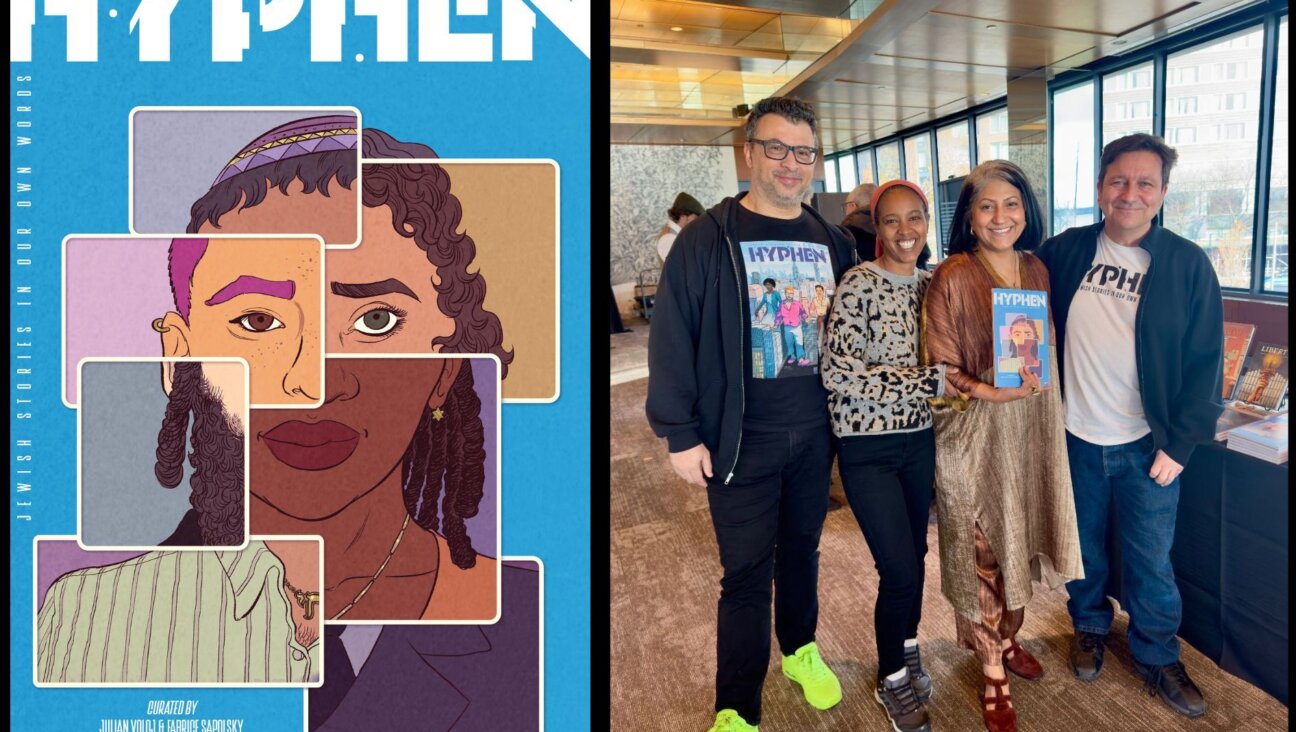A DNA Pioneer Finally Gets Her Due — 50 Years Late
Fifty years ago this week, James Watson and Francis Crick officially won the race to map out the structure of DNA, a victory that would eventually earn them the Nobel Prize in physiology and medicine. Now, as the golden anniversary of the discovery is marked, determined feminists and former colleagues are fighting to make sure that a fair share of the credit belatedly goes to Rosalind Franklin.
The product of a well-to-do Jewish family in England, Franklin died of ovarian cancer in 1958 at age 37, with most of the world having no idea how significantly Watson and Crick had relied on her work — or how close she came to making the discovery herself.
Franklin’s defenders are making headway: The British science journal Nature, which published Watson and Crick’s groundbreaking article, recently characterized Franklin as a co-discoverer of DNA in its issue marking the anniversary. In many cities on April 22, the PBS science program “Nova” is set to air “Secret of Photo 51,” a documentary about Franklin, based largely on a biography by Brenda Maddux. At least one more biography is reportedly in the works.
According to Maddux, Franklin’s highbrow Jewish upbringing was responsible for the main reasons that she lost out to Watson and Crick: her cautious approach to publishing and a sense of isolation at King’s College London, where she worked on the DNA question.
Watson and Crick, who worked in the Cavendish Laboratory at nearby Cambridge University, shared the Nobel Prize with Maurice Wilkins, one of Franklin’s colleagues at King’s College. In addition to his own research, Wilkins helped the duo by providing them with access to Franklin’s work. By 1962, however, when the Nobel Prize was granted, Franklin had been dead for four years. Nobel committee rules forbid awarding the prize posthumously. Franklin seemed destined to be a footnote to one of the greatest scientific discoveries of the 20th century.
Then came “The Double Helix,” James Watson’s best-selling 1968 account of the race to discover the structure of DNA. The book offered a damning professional and personal portrait of Franklin; Watson described her as a scientist incapable of understanding the significance of her own research
But the book also contained an admission from Watson that he was only able to solve the DNA puzzle with the benefit of Franklin’s research. According to the book, the final breakthrough came after Wilkins showed Watson a photo of DNA produced by Franklin, a leading expert in X-ray crystallography. Recalling his realization that Franklin’s “Photo 51” proved the DNA structure had to be a helix, Watson wrote, “My mouth fell open and my pulse began to race.”
In her book, “Rosalind Franklin: The Dark Lady of DNA” (HarperCollins, 2002), Maddux describes Franklin as a product of an upper-class Ashkenazic family whose ancestors had come to England during the 1760s. At King’s College, according to Maddux, Franklin felt like an outcast, isolated in her own mind by her class and religion, though her mostly gentile colleagues had no idea that she was Jewish.
“She tended to get along better with people who were Jewish,” Maddux said, noting that Franklin was popular with colleagues with whom she worked before and after her two-year stint at King’s. “She felt relaxed. She could be herself.”
Maddux suggested that Franklin’s deliberate approach to scientific research fit the profile of someone raised in England’s upper-class Jewish community, a social-religious milieu where people were taught to play by the rules and keep a low profile.
While Franklin’s cautious style may have allowed Watson and Crick to claim the DNA prize, her defenders argue that she was at most months away from solving the puzzle herself — belying the claim that she lacked the intellectual heft to make the discovery on her own.
In fact, at the time that Watson was attempting to get his book published, several main subjects and independent readers challenged the accuracy of his initial manuscript, including its unflattering portrayal of Franklin. After Harvard University Press reversed its decision to publish the book, the Atheneum publishing house stepped in, turning it into a best seller — and, for decades, the definitive portrait of Franklin.
Franklin’s mother was so upset by the book that she reportedly said it would be better that her daughter be forgotten than remembered in such an unflattering way.
Relying on original interviews with Maddux and several of Franklin’s colleagues, including Wilkins, the upcoming Nova program works to rebut Watson’s negative portrayal, attributing many of Franklin’s problems to the sexist attitudes she encountered.
“Gender issues were big in the 1950s,” said Gary Glassman, the producer of the Nova program. “Here was this very strong-willed, very educated, determined young woman. She was only 30 years old at the time — and was very well trained, with a clear idea of how to go about solving the structure of DNA. But she was up against a society that didn’t know what to make of her.”















